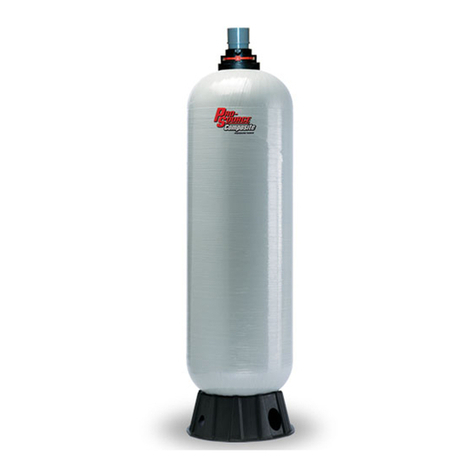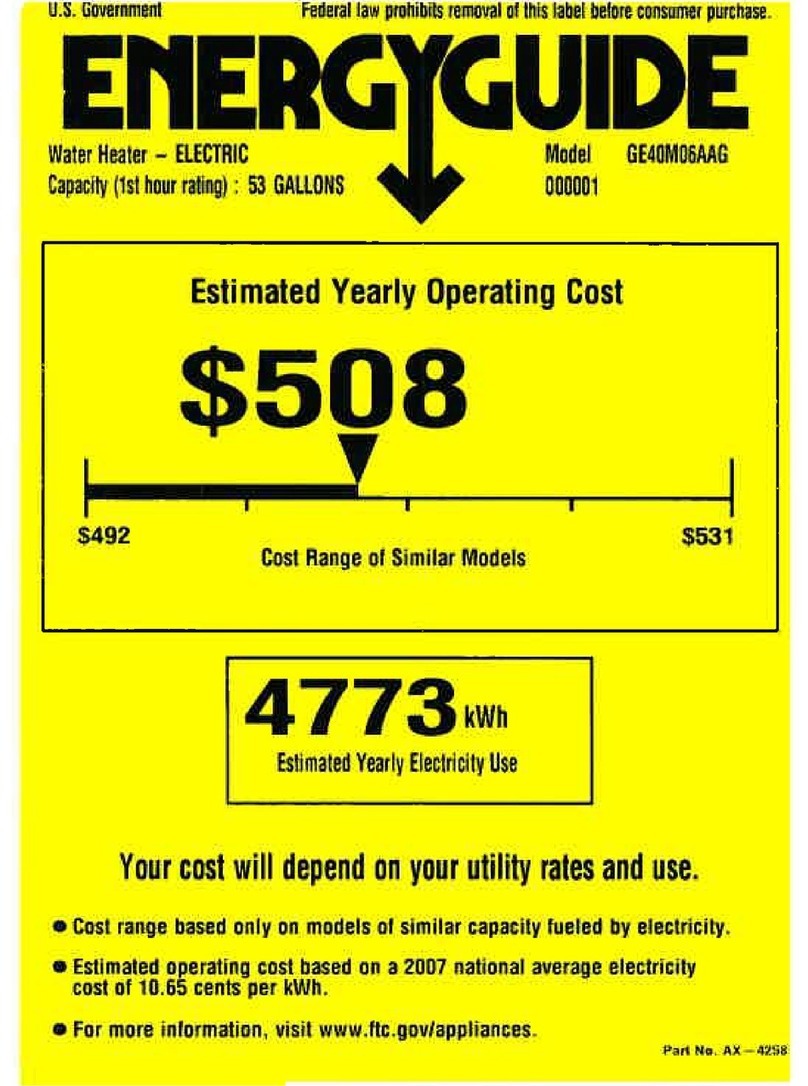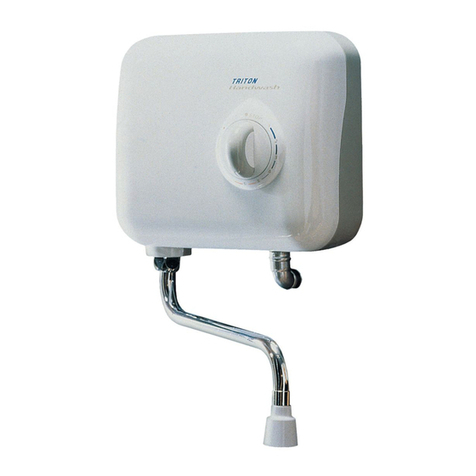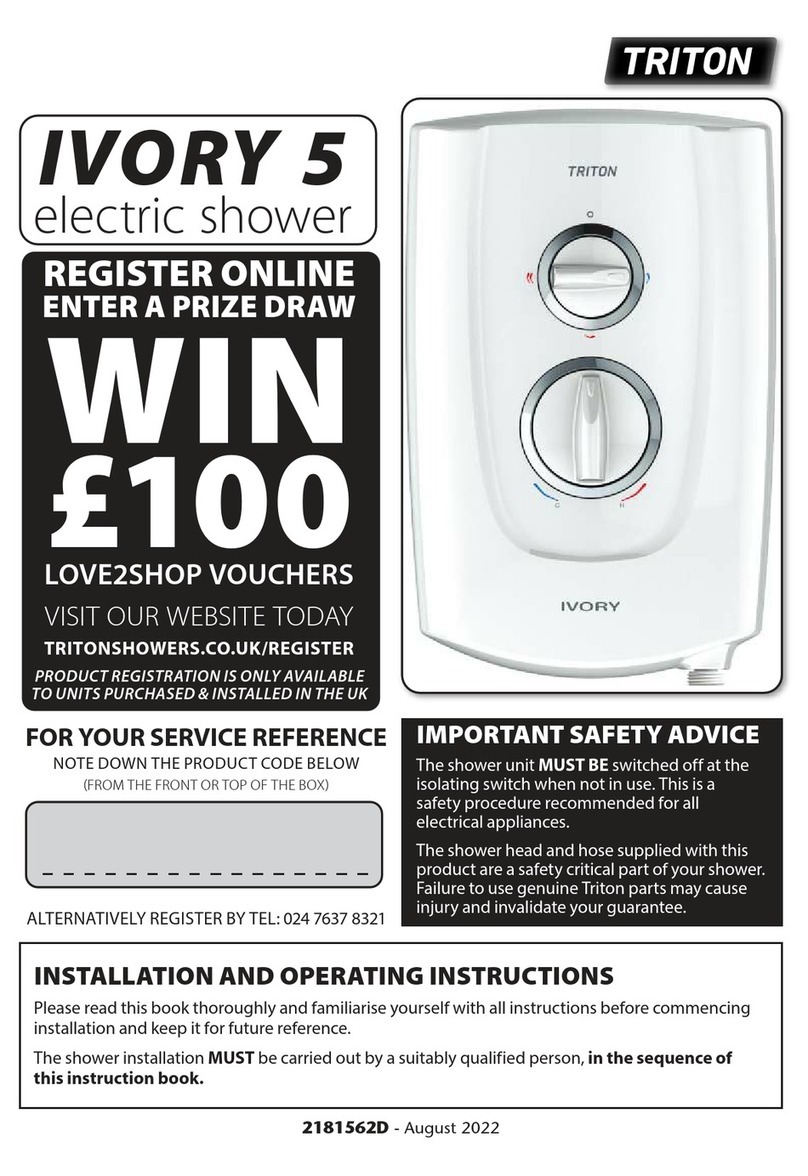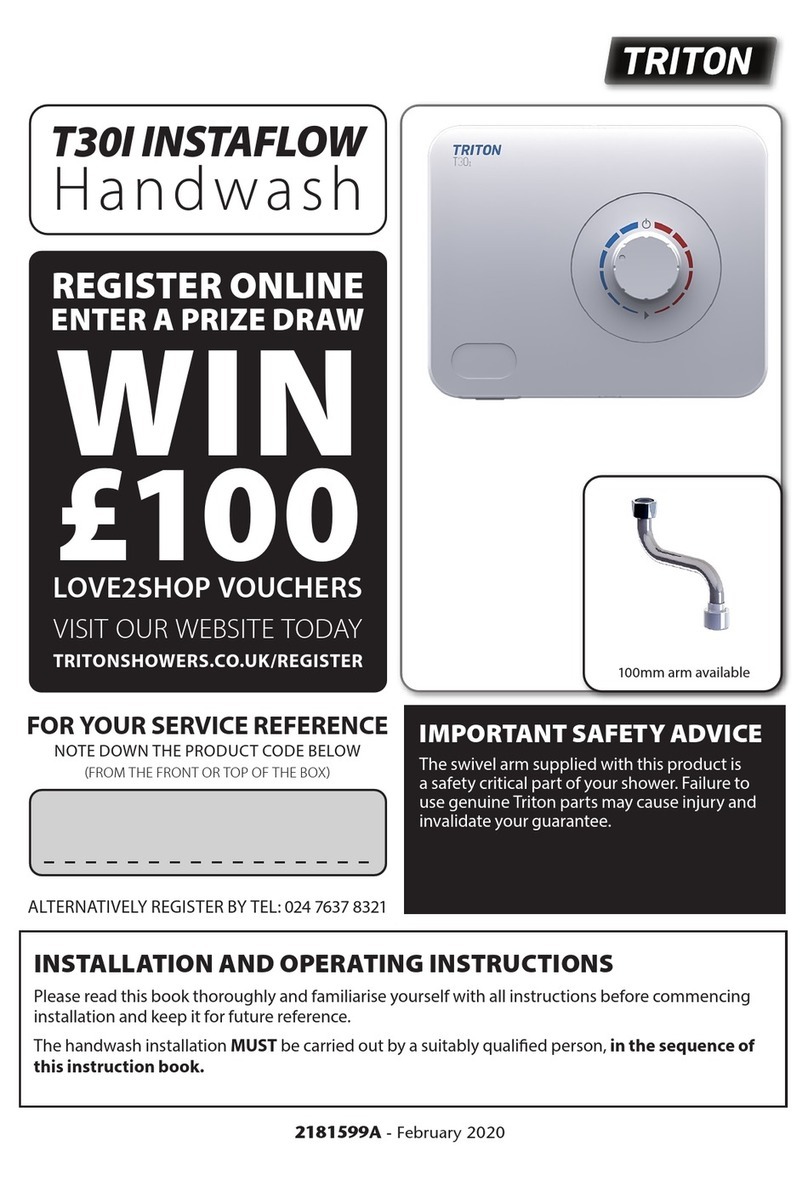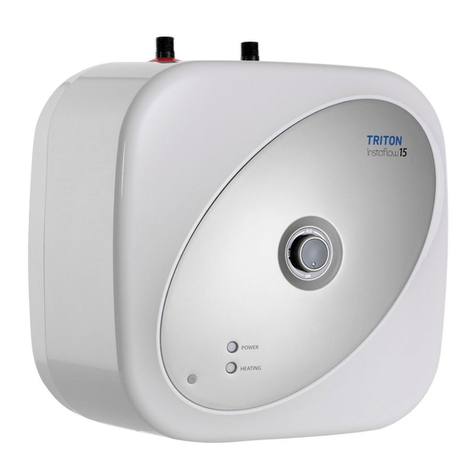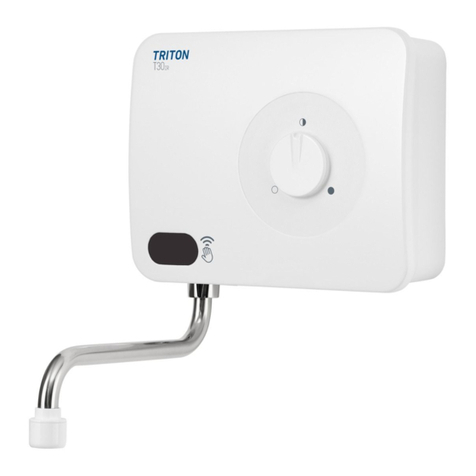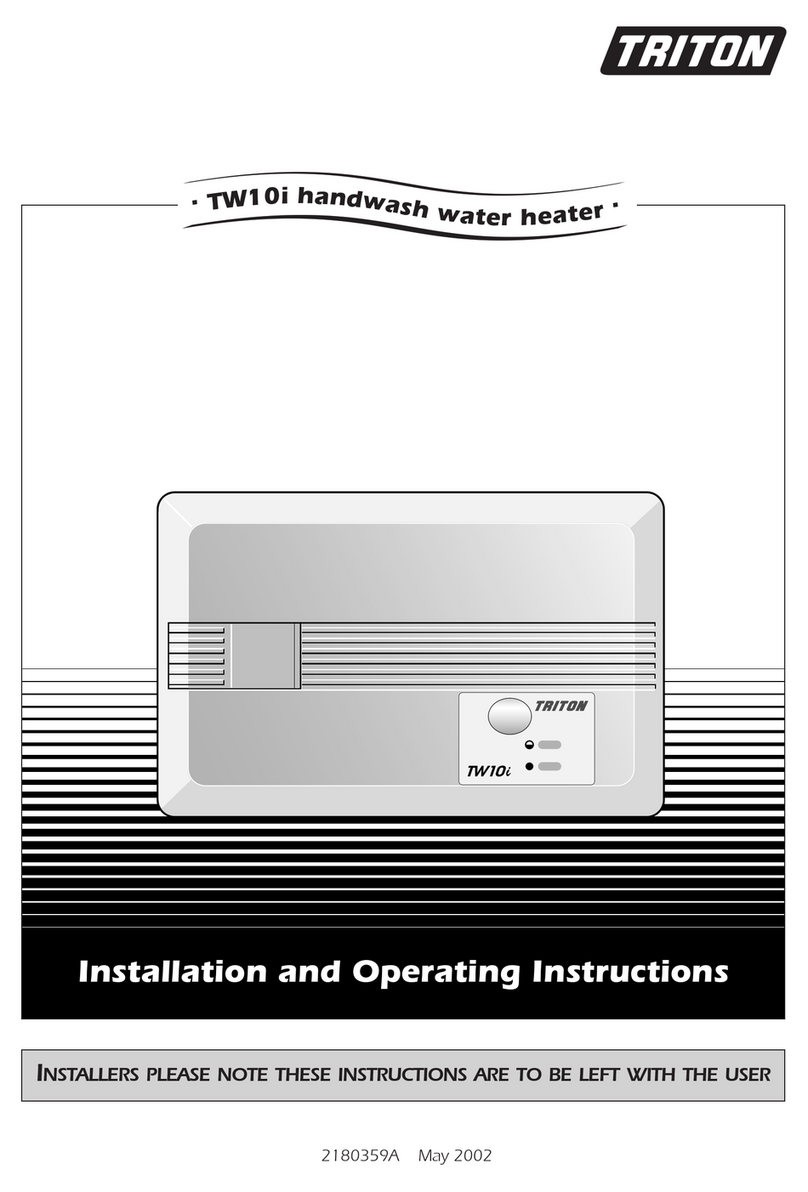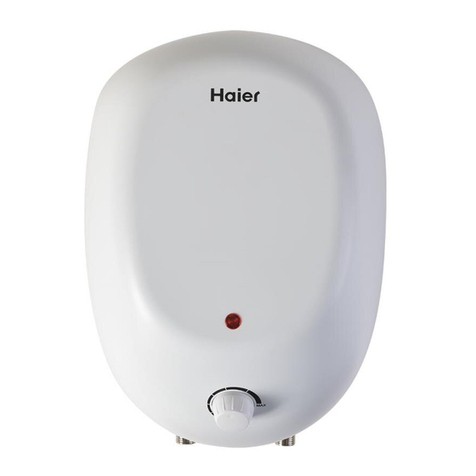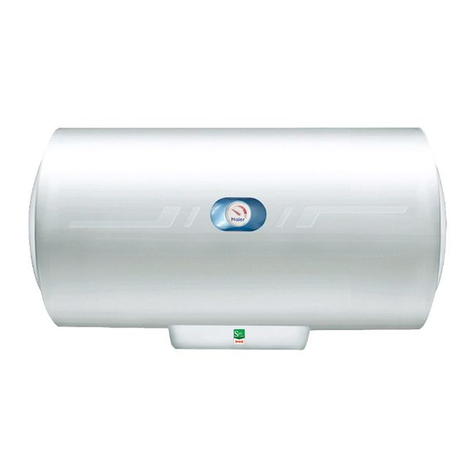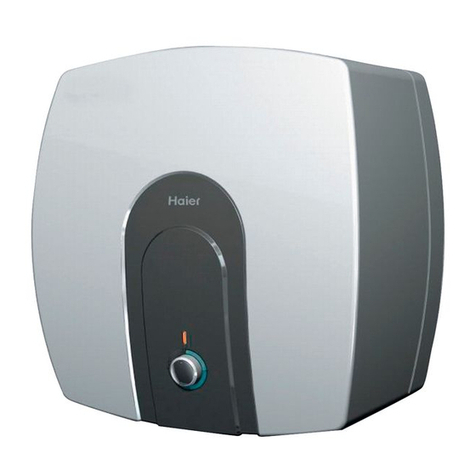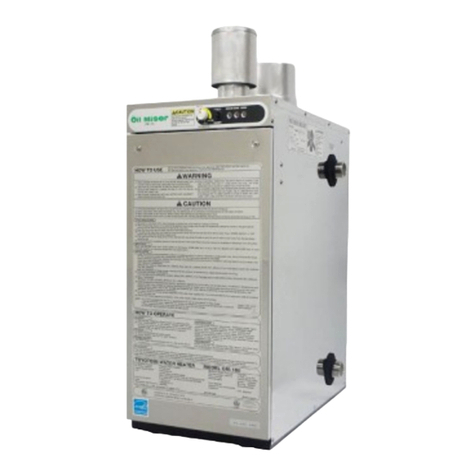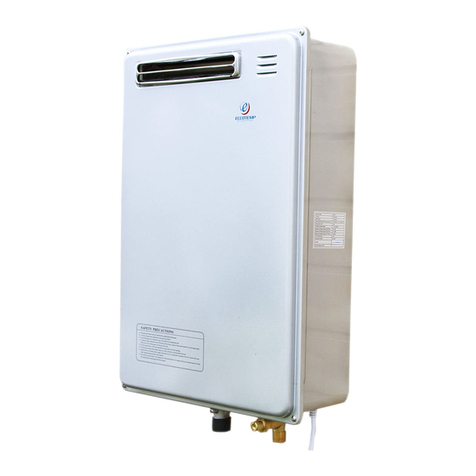
3
1 GENERAL
1.1 Isolate the electrical and water supplies before
removing the cover.
1.2 Read all of these instructions and retain them
for later use.
1.3 DO NOT take risks with plumbing or electrical
equipment.
1.4 Isolate electrical and water supplies before
proceeding with the installation.
1.5 The unit must be mounted onto the nished
wall surface (on top of the tiles). DO NOT tile
up to or seal around ANY PART of the unit
using silicone sealer after xing to the wall.
Special care must be taken NOT TO BLOCK
OR SEAL ANY PRD VENTS ON THE UNIT.
1.6 Contact Triton Customer Experience (see back
page), if any of the following occur:
a) If it is intended to operate the handwash at
pressures above the maximum or below the
minimum stated.
b) If the unit shows a distinct change in performance.
c) If the handwash is frozen.
1.7 If it is intended to operate the hadwash in
areas of hard water (above 200 ppm
temporary hardness), a scale inhibitor may
have to be tted. For advice on the Scale
Inhibitor, contact Triton Customer Experience.
1.8 The sprayhead must be cleaned regularly with
descalent to remove scale and debris,
otherwise restrictions to the ow on the outlet
of the unit will result in higher temperatures
and could also cause the (PRD) Pressure Relief
Device in the unit to operate.
1.9 This product is not suitable for mounting into
steam rooms or steam cubicles.
2 PLUMBING
2.1 The plumbing installation must comply with
Water Regulations, Building Regulations or any
particular regulations as specied by Local
Water Company or Water Undertakers and
should be in accordance with BS EN 806.
2.2 The supply pipe must be ushed to clear debris
before connecting to the handwash unit.
2.3 DO NOT solder pipes or ttings within 300mm
of the handwash unit, as heat can transfer
along the pipework and damage components.
2.4 DO NOT t any form of outlet ow control as
the outlet acts as a vent for the heater can.
2.5 DO NOT use excessive force when making
connections to the swivel arm or sprayhead,
nger tight is sufcient.
2.6 All plumbing connections must be completed
before making the electrical connections.
2.7 This appliance MUST NOT be connected to
the inlet supply by a hose-set.
3 ELECTRICAL
3.1 The installation must comply with BS 7671
‘Requirements for Electrical Installations’ (IEE
wiring regulations), building regulations or any
particular regulations as specied by the local
Electrical Supply Company.
3.2 This appliance MUST be earthed.
3.3 In accordance with ‘The Plugs and Sockets etc.
(Safety) Regulations 1994’, this appliance is
intended to be permanently connected to the
xed wiring of the electrical mains system.
3.4 Make sure all electrical connections are tight to
prevent overheating.
3.5 A 30mA residual current device (RCD) MUST
be installed in all UK electric circuits. This may
be part of the consumer unit or a separate
unit.
3.6 Switch off immediately at isolating switch if
water ceases to ow during use.
3.7 Other electrical equipment i.e. extractor fans,
pumps etc. must not be connected to the
circuits within the unit.
3.8 If the product is to be left unattended for a
signicant amount of time without use, Triton
recommends the product is isolated from the
electricity supply.
3.9 As with all electrical appliances it is
recommended to have the handwash and
installation checked at least every two years by
a competent electrician to ensure there is no
deterioration due to age and usage.
IMPORTANT - PLEASE READ THESE
GENERAL GUIDANCE NOTES BEFORE PROCEEDING
To check the product suitability for commercial and multiple installations, please contact Triton’s
specication advisory service before installation. Please see back of book for contact information.




